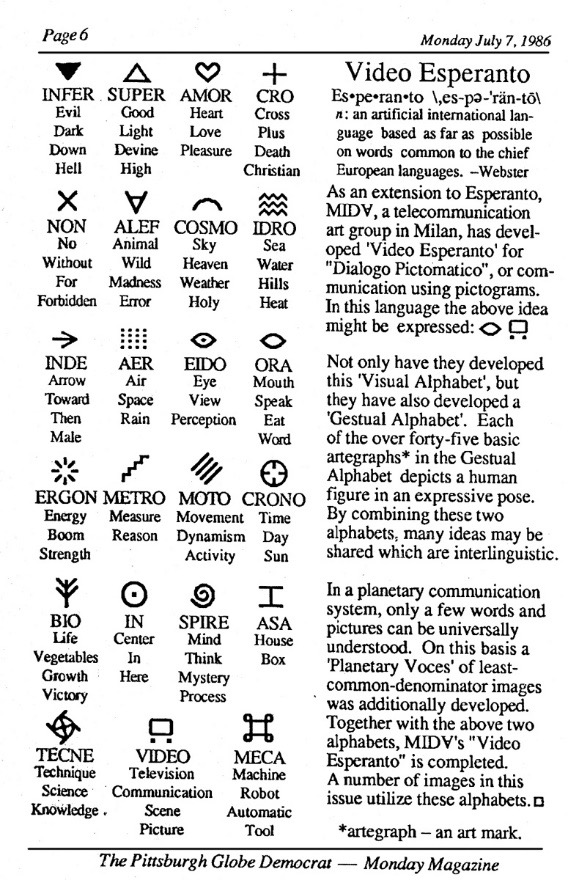Video Abstract
The 1986 edition of the Venice Biennale was dedicated to the theme “art and science,” and “Ubiqua,” the first “planetary art network,” was held at the Arsenale corderie in Venice. Gualtiero and Roberto Carraro, participating in the Ubiqua exhibition with the Midas group, presented “Video Esperanto”, which identified visual codes based on ideograms linked to words. These lists of ideograms named by interlinguistic terms, can be useful today for understanding the functioning of artificial intelligence according to the so-called “Platonic Hypothesis.”
An image connected to a word is the fulcrum on which AI image recognition training is based, which precisely operates on a visual element equipped with a “label” (a verbal definition). It is in this way that LLMs are trained, with images labeled by words. When these words are entered into a prompt, the model searches its archive and identifies the corresponding images, which number in the millions. So in a sense, if the system searches for “cat,” it lumps together millions of cat images, all of which refer to the idea (eidos) of cat, described by one word, or rather, by different words in all languages with the same meaning: cat. This is an “interlinguistic cat idea” that does not coincide with a specific image of a cat, but is close to the ideogram of a cat, or rather, in accordance with Plato, to the idea of a cat.
Among the documents exchanged through various electronic systems by the international working groups in the 1986 Planetary Art Network, this article from the Pittsburgh group commented on the Italian research, calling it relevant to an interlingual visual code, “video Esperanto” consisting of ideograms labeled by words in multiple languages.
Something that somehow alludes to the “ideas” of artificial intelligence, in which images and words converge.



